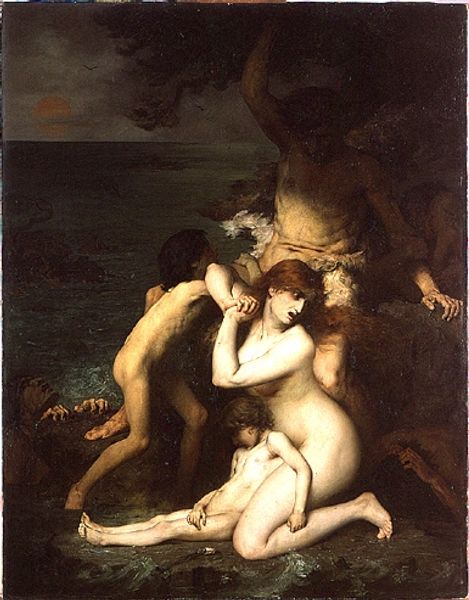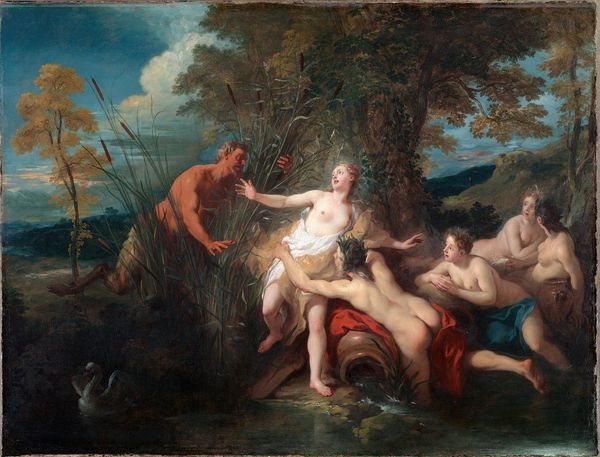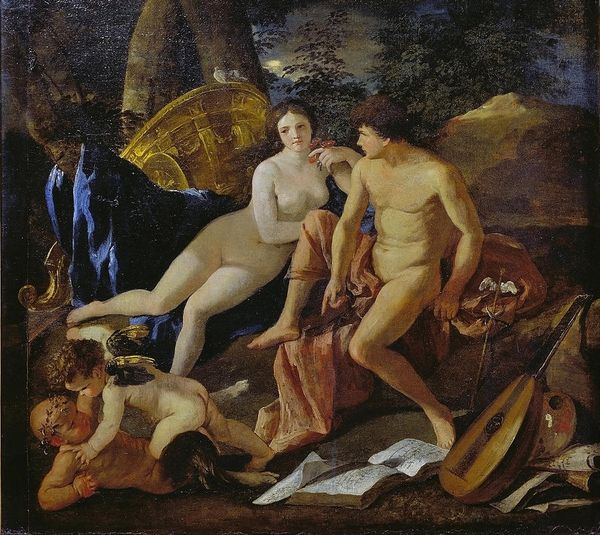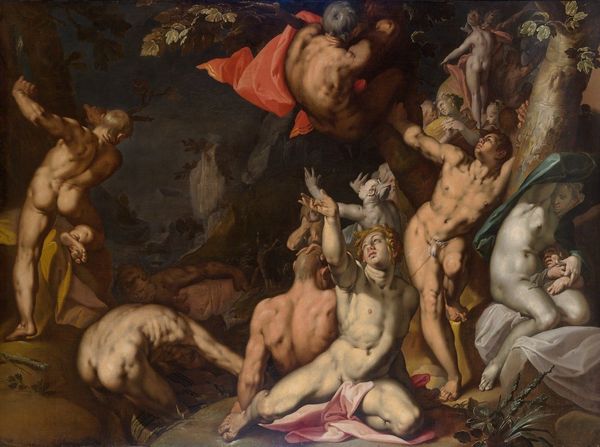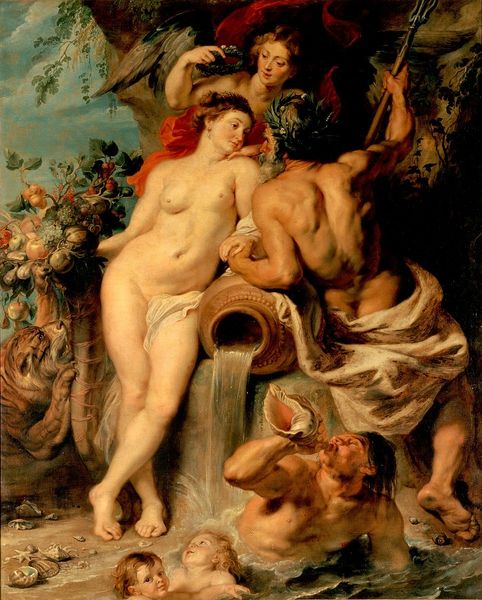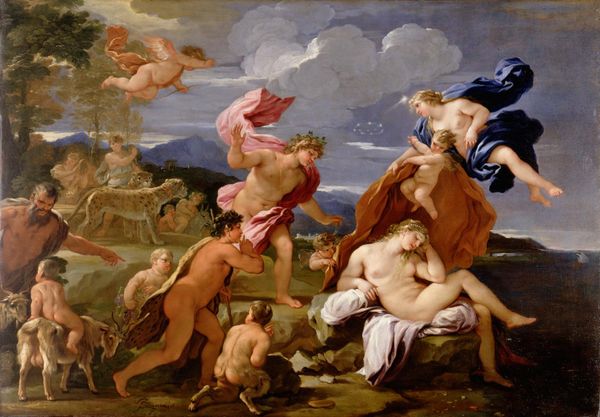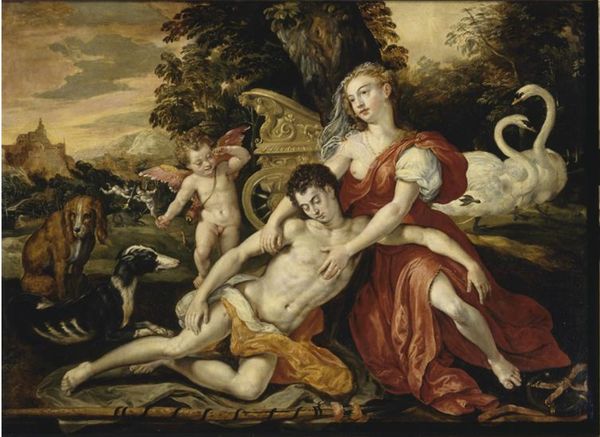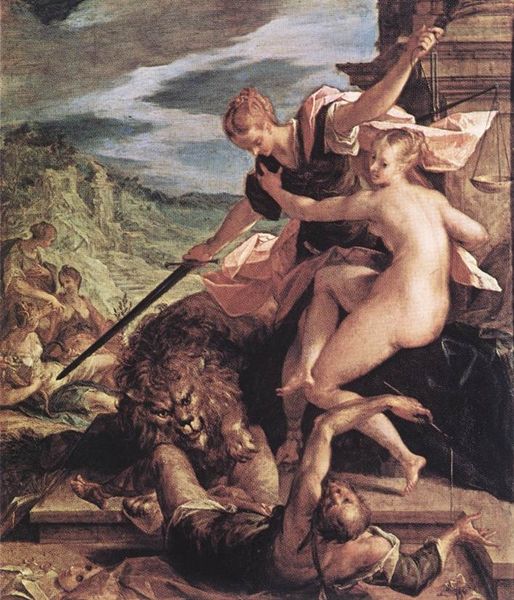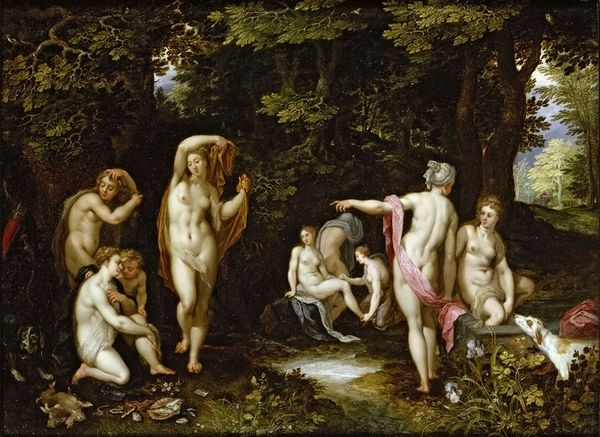
painting, oil-paint
#
allegory
#
baroque
#
fantasy art
#
painting
#
oil-paint
#
figuration
#
underpainting
#
mythology
#
history-painting
#
academic-art
Copyright: Public domain
Charles Le Brun painted "La Déification D'enée" using oil on canvas to depict a scene steeped in classical mythology and baroque sensibilities. Le Brun, as court painter to Louis XIV, operated within a rigid social hierarchy, and his art often served to legitimize power through allegorical narratives. Here, we see Aeneas, the Trojan hero, ascending to divinity, guided by his mother Venus. The painting's themes—duty, destiny, and divine intervention—are classic, but also speak to the era’s obsession with lineage and authority. In depicting Aeneas's deification, Le Brun doesn't merely illustrate a myth; he reinforces the symbolic connection between power and the divine, a common trope in royal portraiture. The bare flesh of the figures, especially Venus, draws us in, while also reminding us of the classical ideals of beauty and heroism which informed the values of the court. The emotional intensity of the piece—Aeneas's awe, Venus's maternal guidance—invites us to reflect on the stories we tell ourselves about leadership, legacy, and the very human desire for immortality.
Comments
No comments
Be the first to comment and join the conversation on the ultimate creative platform.
